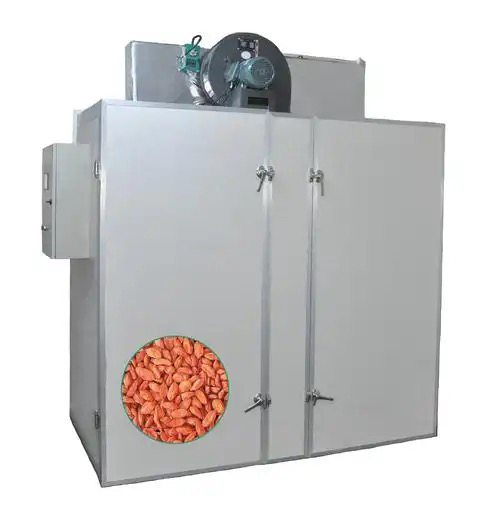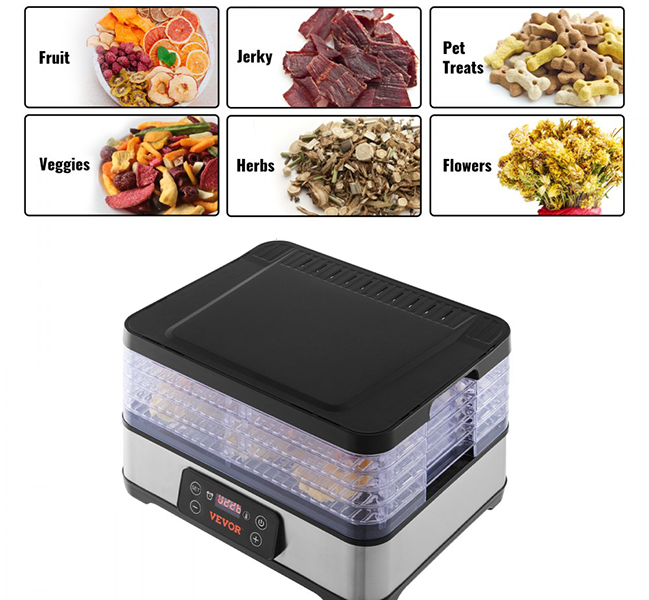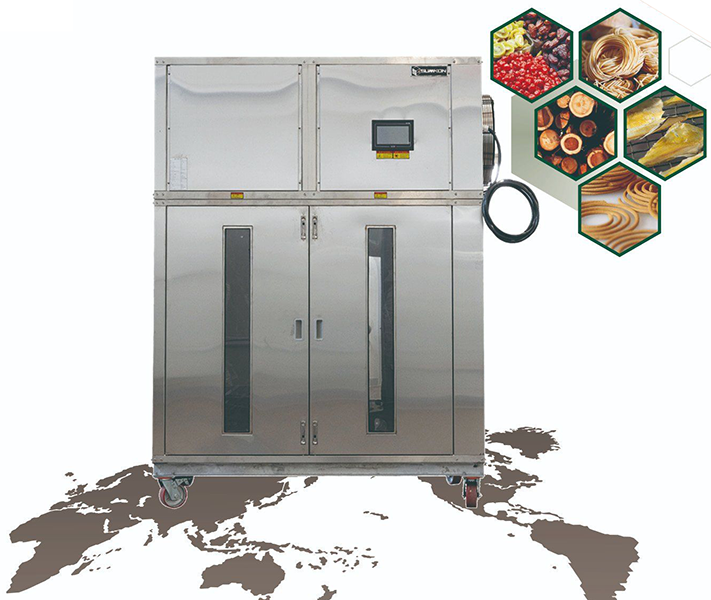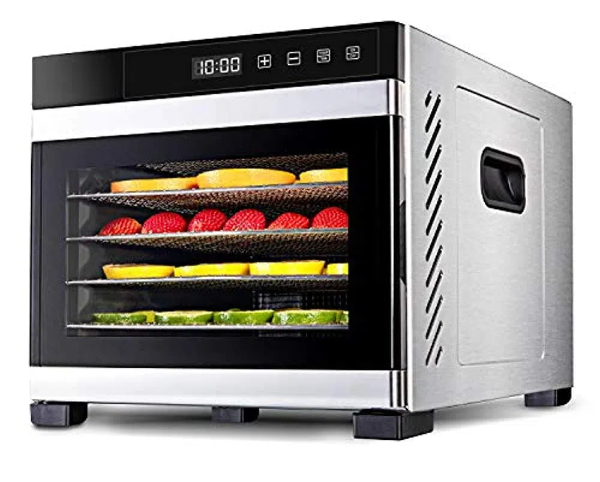
Content Menu
● Introduction to Food Drying Technology
● Understanding Heat Pump Dryers
● Advantages of Using Heat Pump Dryers for Food
>> Energy Efficiency
>> Quality Preservation
>> Versatility
>> Reduced Operating Costs
● Average Cycle Time for Heat Pump Dryers
>> Factors Influencing Cycle Time
>> Typical Cycle Times for Common Foods
● Best Practices for Using Heat Pump Dryers
● Innovations in Heat Pump Drying Technology
>> Smart Technology Integration
>> Enhanced Energy Recovery Systems
>> Improved Control Systems
● Conclusion
● Frequently Asked Questions
>> 1. What is the average cycle time for drying fruits in a heat pump dryer?
>> 2. Can heat pump dryers be used for drying meats?
>> 3. How does the moisture content of food affect drying time?
>> 4. What are the benefits of using a heat pump dryer over traditional dryers?
>> 5. Are there specific foods that should not be dried in a heat pump dryer?
Introduction to Food Drying Technology
Food drying is an ancient preservation method that has evolved significantly with advancements in technology. Among the various drying methods, heat pump dryers have gained popularity due to their energy efficiency and ability to maintain the quality of food products. This article explores the workings of heat pump dryers, their advantages for food drying, and the average cycle times associated with these machines.

Understanding Heat Pump Dryers
Heat pump dryers operate on a simple yet effective principle: they use a refrigeration cycle to remove moisture from food products. Unlike traditional dryers that expel hot air, heat pump dryers recycle the air within the system, making them more energy-efficient. This process involves three main components: the evaporator, the compressor, and the condenser.
1. Evaporator: The evaporator absorbs moisture from the food. As the air passes over the evaporator coils, the moisture condenses and is collected.
2. Compressor: The compressor increases the pressure of the refrigerant, which raises its temperature. This hot refrigerant is then sent to the condenser.
3. Condenser: In the condenser, the hot refrigerant releases its heat to the air, which is then circulated back into the drying chamber.
This closed-loop system allows heat pump dryers to operate at lower temperatures, preserving the nutritional and sensory qualities of the food.
Advantages of Using Heat Pump Dryers for Food
Energy Efficiency
One of the most significant advantages of heat pump dryers is their energy efficiency. They consume less energy compared to conventional dryers, making them an environmentally friendly option. This efficiency is particularly beneficial for large-scale food processing operations where energy costs can be substantial.
Quality Preservation
Heat pump dryers operate at lower temperatures, which helps in preserving the flavor, color, and nutritional value of the food. This is crucial for products like fruits, vegetables, and herbs, where high temperatures can lead to loss of essential nutrients and changes in taste.
Versatility
Heat pump dryers can be used for a wide range of food products, including fruits, vegetables, meats, and herbs. This versatility makes them an ideal choice for food manufacturers looking to diversify their product offerings.

Reduced Operating Costs
Although the initial investment in a heat pump dryer may be higher than traditional dryers, the long-term savings on energy bills and maintenance costs can make them a more economical choice over time.
Average Cycle Time for Heat Pump Dryers
The average cycle time for a heat pump dryer can vary significantly based on several factors, including the type of food being dried, the moisture content of the product, and the specific settings used on the dryer. Generally, the cycle time can range from 6 to 12 hours for most food products.
Factors Influencing Cycle Time
1. Type of Food: Different foods have varying moisture content and drying requirements. For example, fruits like apples and bananas may take less time to dry compared to vegetables like carrots or potatoes.
2. Moisture Content: The initial moisture content of the food plays a crucial role in determining the drying time. Foods with higher moisture content will require longer drying times.
3. Dryer Settings: Heat pump dryers come with various settings that can affect drying times. Higher temperature settings may reduce drying time but could compromise the quality of the food.
4. Load Size: The amount of food being dried at one time can also impact the cycle time. Larger loads may take longer to dry evenly compared to smaller batches.
Typical Cycle Times for Common Foods
1. Fruits: 6 to 8 hours
2. Vegetables: 8 to 12 hours
3. Herbs: 4 to 6 hours
4. Meats: 10 to 12 hours
Best Practices for Using Heat Pump Dryers
To optimize the performance of heat pump dryers and ensure the best quality of dried food, consider the following best practices:
1. Pre-treatment: Some foods benefit from pre-treatment methods such as blanching or soaking in a solution to enhance flavor and color retention. For instance, blanching vegetables before drying can help preserve their vibrant colors and nutritional value.
2. Uniform Slicing: Cutting food into uniform pieces ensures even drying and reduces the overall cycle time. This practice is particularly important for fruits and vegetables, as uneven sizes can lead to some pieces being over-dried while others remain moist.
3. Proper Loading: Avoid overloading the dryer to allow for adequate airflow, which is essential for effective drying. Proper spacing between items can enhance air circulation and improve drying efficiency.
4. Regular Maintenance: Keep the dryer clean and well-maintained to ensure optimal performance and longevity. Regularly check and clean the filters and condensate tank to prevent clogs and ensure efficient operation.
Innovations in Heat Pump Drying Technology
The field of heat pump drying technology is continuously evolving, with innovations aimed at improving efficiency and product quality. Some of the latest advancements include:
Smart Technology Integration
Many modern heat pump dryers now come equipped with smart technology that allows users to monitor and control the drying process remotely. This feature enables operators to adjust settings, track cycle times, and receive alerts when drying is complete, enhancing convenience and efficiency.
Enhanced Energy Recovery Systems
Newer models are incorporating advanced energy recovery systems that capture and reuse heat generated during the drying process. This innovation further reduces energy consumption and enhances the overall efficiency of the drying operation.
Improved Control Systems
Advanced control systems allow for more precise temperature and humidity management during the drying process. This capability ensures that food is dried uniformly and at optimal conditions, preserving quality and reducing drying times.
Conclusion
Heat pump dryers represent a modern solution for food drying, offering energy efficiency, quality preservation, and versatility. Understanding the average cycle times and factors influencing these times can help food manufacturers optimize their drying processes. By implementing best practices and staying informed about technological advancements, users can maximize the benefits of heat pump dryers, ensuring high-quality dried food products.

Frequently Asked Questions
1. What is the average cycle time for drying fruits in a heat pump dryer?
The average cycle time for drying fruits typically ranges from 6 to 8 hours.
2. Can heat pump dryers be used for drying meats?
Yes, heat pump dryers can effectively dry meats, with cycle times generally between 10 to 12 hours.
3. How does the moisture content of food affect drying time?
Foods with higher moisture content will require longer drying times compared to those with lower moisture levels.
4. What are the benefits of using a heat pump dryer over traditional dryers?
Heat pump dryers are more energy-efficient, preserve food quality better, and have lower operating costs in the long run.
5. Are there specific foods that should not be dried in a heat pump dryer?
While most foods can be dried, items with very high fat content, like avocados, may not dry well and could spoil.












